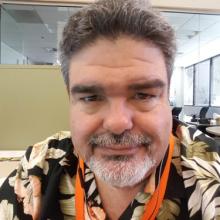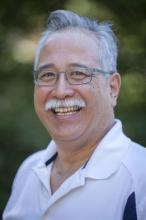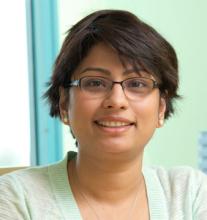The Advanced Light Source at Lawrence Berkeley Lab: Beamline Science, Design and Control

Dr. Corie Ralston
Head, Berkeley Center for Structural Biology/Scientist
Lawrence Berkeley National Laboratory, CA
Thu, 04/18/2019
Abstract - The Advanced Light Source at Lawrence Berkeley National Laboratory: Beamline Science, Design, and Control The Advanced Light Source (ALS) is a national user facility designed to produce extremely bright X-Ray beams. Currently, there are over forty X-ray beamlines available at the ALS, all operating simultaneously but designed for different types of experiments in a wide range of fields, from discovery of new superconductors to characterizing protein structure. Chemists, physicists, and biologists from around the world apply for time at the ALS, and conduct experiments either onsite or remotely. The design and control of these beamlines requires a team of engineers and scientists, and typically is achieved through LabView and EPICS interfaces to motors, mirrors, and other specialized hardware. In this talk, I will cover the range of experiments conducted at the ALS, the types of software and hardware control used, and the exciting science that is enabled by the facility.
Dr. Corie Ralston has a bachelors in Physics and a doctorate in Biophysics. She completed a post-doctorate at Brookhaven National Laboratory in synchrotron techniques to study RNA structure, and is now at Lawrence Berkeley National Laboratory, where she started as a beamline scientist in 2002. Since 2012 she has been head of the Berkeley Center for Structural Biology, which runs five macromolecular crystallography X-Ray beamlines, and develops new synchrotron techniques at the Advanced Light Source.
Passive Optical Networks: Technology for Broadband Access to the Home

Dr. Rajiv Dighe
Sr. Product Line Manager
Broadcom, Petaluma, CA
Thu, 04/04/2019
Abstract - In this seminar, we will present a technology that has been used worldwide for providing broadband connectivity to the home. This technology is called Passive Optical Networks and is in mass deployment worldwide for Fiber To The Home (FTTH) initiatives. We will talk about the market drivers for this technology, the market dynamics and the applications that are driving the need for this technology in the home. We will talk about the different standards for this technology, the in-home applications that are being driven by this technology including WiFi access and IOT devices that are being controlled by the Fiber-based Home Gateway that is the hub of the smart home.
Dr. Rajiv Dighe manages Broadcom’s Fiber-based Home Gateways (E/GPON) and is based in Petaluma, California. Rajiv got his Ph.D. in Electrical Engineering from University of Notre Dame and has been working on Broadband networks ever since. He started at AT&T Bell Labs in Holmdel, NJ, followed by NEC Research Center in Princeton, NJ where his work led to a startup on Broadband Access Multiplexers – Eulix Networks that he headed as the CTO. He then moved to the Semiconductor Industry working at Globespan, Conexant and finally Broadcom.
Grid Voltage Regulation with Distributed Energy Resources

Mr. Mark Baldassari
Director of Codes and Standards
Enphase, Petaluma, CA
Thu, 03/14/2019
Abstract - Utilities manage voltage drop along feeder circuits that can extend tens of miles. According to industry standards, a utility is obligated to keep the voltage at each service within 5% of its rated values. It usually accomplishes this using distributed capacitor banks and voltage regulators— automatically adjustable load-tap–changing transformers—placed at a few locations along each feeder. Distributed Energy Generation (DER) can help regulate voltage through Advanced Grid Functions (AGF) which control Reactive and Active power levels. The net result stabilizes grid frequency and voltage.
Mr. Mark Baldassari – has over 34 years’ experience in engineering and product development and over 10 years with Enphase Energy, where he holds the position of Director, Codes and Standards. Currently, he actively participates in a number of Codes and Standards development groups both internationally and domestically. Domestically, Mr. Baldassari regularly participates in IEEE 1547 series of standards development with emphasis towards improving the grid integration of PV systems. He is involved with Underwriters Laboratory working on the harmonization of UL and IEC standards and a Standards Technical Panel member for UL 1699B and UL 2703. Mr. Baldassari is an active member of the CalSEIA Codes and Standards and PV Industry Forum. He is very involved with the drafting of the 2020 NEC for articles 690 and chairman for article 705. Mr. Baldassari has bachelor degree in Electrical and Electronic Engineering from California State University Sacramento, USA.
Radio Wave Propagation in Open and Obstructed Environments

Mr. Rod Sugiyama
Chief Operating Officer
Operant Solar, Santa Rosa, CA
Thu, 03/07/2019
Abstract - Radio frequency propagation is critically important in our modern society. In addition to commonly known wireless devices such as mobile phones and wireless LAN, Services such as Waze (GPS location services), medical applications such as MRI, communication for police and fire services rely on RF propagation to deliver the service at the highest quality level. Since these services use open air as the transmission media, there is a critical need to engineer not only the electronics of wireless devices and systems but application of the knowledge of RF propagation in the real world. Thus, engineers need to understand and mitigate the effects of various obstructions on the RF links to deliver the ultimate satisfaction to the end and intermediate users. With that in mind, this presentation introduces key concepts of radio wave propagation in free space and through various types of obstructions.
Mr. Rod Sugiyama has 25+ years of engineering management and with 14 years of R&D program leadership. He has crossfunctional expertise and experience in leading purchasing, manufacturing and design engineering teams to achieve best in class results. Rod utilized his skills and experience at Tektronix, Keithey Instruments and HP/Agilent/Keysight in all aspects/phases of programs: mechanical, software, test and electronic hardware development through production ramp. He has managed remote sites and organizations of 5-60 people. Rod has an AS in Electronic Technology from SRJC and a BSEE from Cal State University, Sacramento.
Advances Made in Electronic Devices Using Widebandgap Semiconductors

Dr. Srabanti Chowdhury
Associate Professor
EE Department, Stanford University, Palo Alto, CA
Thu, 02/21/2019
Abstract - We live in extremely exciting times, often identified as age of the fourth industrial revolution. With electrification at every level, we are witnessing the most significant transformation of transportation since the internal combustion engine. Renewable energy is now a reality. Robotics and autonomous vehicles are upon us. This new world needs new physical electronics solutions with new materials, devices and heterogeneous integration to drive these innovations to their full potential. Widebandgap (WBG) semiconductors present a pathway to enable much of these electronics with higher efficiency and newer functionalities. Semiconductor devices with higher power density have unprecedented value in both power and high frequency electronics. Reducing conversion losses helps minimizing consumption of limited resources; it simultaneously enables new compact solutions, the basis for offering increased power conversion performance at reduced system cost. GaN has also opened the door to other ultrawide bandgap materials such as Diamond, Aluminum Nitride and Gallium Oxide.
Dr. Srabanti Chowdhury is an Associate Prof. of EE at Stanford University and holds an adjunct faculty position at UC Davis. She received her M.S and PhD in EE UC Santa Barbara. She received the DARPA Young Faculty Award, NSF CAREER and AFOSR Young Investigator Program (YIP) in 2015. In 2016 she received the Young Scientist award at the International Symposium on Compound Semiconductors (ISCS). She serves as the member of two committees under IEEE Electron Device Society. She has served the IEEE International Devices Meeting (IEDM) technical sub committee Electron served the IEEE International Electron on Power Devices & Compound Semiconductor and High Speed Devices (PC) subcommittee in 2016 and 2017. She was the PC subcommittee chair for IEDM-2018, and continues to serve the IEDM executive committee for 2019. She is a senior member of IEEE.